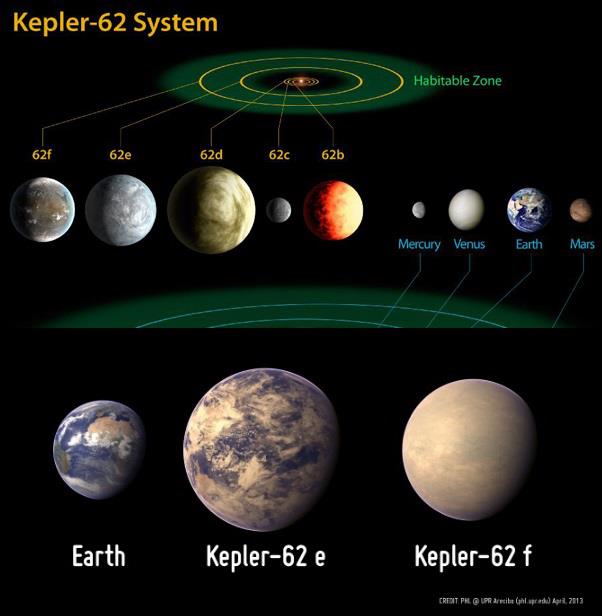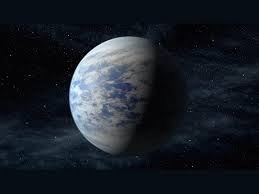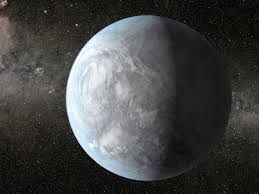

Yesterday, we covered the new exoplanet profiles, which were discovered by the Kepler Space Observatory, but we wanted to delve a little bit deeper on the candidates in the Kepler-62 system, the two planets (pictured in the bottom image) that may be the right size with the right climate for life to flourish. According to William Borucki, the chief scientist for NASA’s Kepler telescope, “The distant duo are the best candidates for habitable planets that astronomers have found so far”.

The two planets, known as Kepler-62e and Kepler-62f, circle the same star that is located around 1,200 light-years distant and are right next to each other (closer than Mars is to Earth). The star, dubbed Kepler-62, a K2 dwarf, is similar to our sun in many ways, though it is about 1/3rd smaller, about 2 billion years older and only 1/5th as bright, which means any potentially habitable planet would have to be orbiting pretty close to the star to receive all of the energy it would need for life to thrive. Kepler-62e fits that bill, as it is the innermost planet in its planetary system. If it has an Earth-like atmosphere, the climate may be similar to that of a tropical island– with surface temperatures reaching about 86 degrees Fahrenheit [or 30 degrees Celsius).

Kepler-62f, on the other hand, is the “chilly” one, with a climate closer to that of a frozen tundra. (Which is cool if you live in Oymyakon) The planet is just about 40% larger than Earth, with temperatures that might hang around -19 degrees F (or -28 degrees C) , which does not sound all that appealing, but is still much warmer than the most habitable worlds in our own solar system (the moons of Jupiter and Saturn). If the planet is indeed habitable, it would need a somewhat-tenuous atmosphere with appreciable carbon-dioxide (a greenhouse gas) in in order to retain water on its surface in liquid form — something that two of the team members believe is likely.
Astronomers are currently divided on whether one is more likely to have life than the other. However, a consensus has been reached that they are both very likely to contain water. Additionally, the planets are old. Very old. If any life exists, then it is sure to be advanced (in terms of evolution).
In total, Kepler and other Earth-bound telescopes have discovered 850 different exoplanets (within a relatively short period of time). The conclusion? Goldilocks planets are everywhere! This is an exciting time in astronomy as we are now one step closer to answering the greatest question of all – Are we alone?